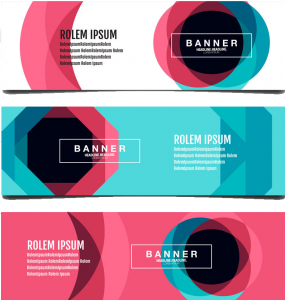In today’s values-first marketplace, ethical advertising isn’t just a trend—it’s a necessity. With consumers demanding more honesty, integrity, and social responsibility from the brands they support, businesses are shifting gears to meet these expectations. That’s where ethical advertising steps in. It’s all about promoting your brand transparently, truthfully, and with a clear conscience—no manipulation, no half-truths, just responsible messaging that resonates.
As more people align their wallets with their values, brands that embrace ethical advertising gain a serious edge. In this guide, we’ll break down what ethical advertising really means and share practical, real-world strategies to help you build trust, stay accountable, and create campaigns that reflect both purpose and profit.
Key Takeaways
✔ Be Transparent, Not Tactful – Openly communicate your processes, list accurate product details, and steer clear of exaggerated or misleading claims. In ethical advertising, truth isn’t optional—it’s expected. Consumers are savvier than ever, and nothing breaks trust faster than being caught fibbing.
✔ Show You’re Greener Than a Hashtag – It’s not enough to slap “eco-friendly” on your product. Today’s conscious consumers want to see real environmental responsibility—think sustainable packaging, waste reduction, and innovative materials. Ethical advertising must go hand-in-hand with authentic eco-practices, or your message will ring hollow.
✔ Put People First, Not Just Profits – Fair wages, safe working conditions, and meaningful community engagement should be woven into your brand’s DNA. Supporting social causes and treating workers right doesn’t just look good—it is good. Ethical advertising thrives on human-centered narratives that reflect genuine care.
✔ Walk the Talk—Everywhere – Consistency across your website, ads, packaging, and customer service is non-negotiable. People crave authenticity. If your messaging screams values but your practices say otherwise, your brand’s credibility will crumble. Ethical advertising demands harmony between what you say and what you do.
✔ Educate, Don’t Just Entice – Clear product descriptions, verified third-party certifications, and informative content empower your customers to make informed choices. Ethical advertising isn’t just about selling—it’s about helping people align their purchases with their principles.
✔ Own Up, Level Up – Slip-ups happen, but it’s how you respond that sets your brand apart. Publicly addressing mistakes, setting measurable goals, and inviting feedback all show that you’re in it for the long haul. This kind of ethical advertising builds loyalty not just through polish, but through progress.
Bottom line: ethical advertising isn’t a box to check—it’s a standard to uphold. When done right, it cultivates trust, earns respect, and strengthens your brand’s place in the hearts of conscious consumers.
Table of Contents
ToggleWhat Is Ethical Advertising?

Ethical advertising is all about doing the right thing—on purpose and in public. It means promoting your products or services with honesty, fairness, and a strong sense of social responsibility. No gimmicks, no half-truths, no flashy promises that crumble under scrutiny. Just straight-up, transparent messaging that respects your audience and builds trust from the get-go.
Unlike old-school marketing that chased quick wins and flash-in-the-pan profits, ethical advertising takes the long view. It’s less about pushing products and more about creating meaningful, values-driven connections with your audience. You’re not just selling—you’re standing for something.
And here’s why it matters more than ever: today’s consumers are smart, socially aware, and sick of shady tactics. They’re looking for brands that mirror their values—whether it’s sustainability, fairness, inclusivity, or transparency. That’s where ethical advertising comes in. It’s not just a marketing strategy anymore; it’s the backbone of brand credibility and long-term loyalty.
This shift marks a new era—one where your brand’s character matters just as much as your product. In this space, trust is currency, and transparency is king. Ethical advertising isn’t just good for your conscience—it’s great for business.
The Evolution of Ethical Marketing
Ethical marketing has undergone a major transformation—from a shallow PR stunt to a deep-rooted business philosophy. It’s no longer enough for brands to merely say they care. Now, they’re expected to show it, through action, transparency, and measurable impact. Ethical advertising has become the new gold standard, separating the brands that walk the talk from those just riding the trend.
#1. From Greenwashing to Genuine Integrity
There was a time when “green” buzzwords and leaf-stamped packaging were enough to win over eco-conscious consumers. That era? Long gone. What used to pass as ethical advertising—bold, hollow claims with zero substance—now gets called out in a heartbeat. Greenwashing has lost its grip, replaced by an era of accountability and authenticity.
Today’s savvy consumers demand receipts—literally and figuratively. With endless access to information, they can sniff out fluff from facts. Ethical advertising now calls for more than marketing spin; it demands proof. Real commitment. Measurable progress.
Take Patagonia and Tesla, for example:
These aren’t just companies slapping a “green” label on their products. They’ve baked sustainability into their operations, products, and brand DNA. They don’t just sell ideals—they embody them.
#2. Rise of the Conscious Consumer
Enter the conscious consumer—a growing wave of buyers who spend with purpose. They care where their money goes, and they reward brands that reflect their values. Whether it’s social justice, environmental impact, or labor ethics, this new generation of consumers wants brands to step up.
According to the Ethical Markets Report 2022, the Ethical Food and Drink sector alone saw a 9.7% growth, adding nearly £1 billion in just a year. That’s not a fluke—that’s a loud and clear message: people are choosing principles over price tags.
So what does this mean for you?
✅ Your values must be visible.
✅ Your promises must be provable.
✅ Your messaging must be meaningful.
Ethical advertising isn’t just a way to look good—it’s how you earn and keep trust in a values-driven market. Fall short, and you risk losing the very audience that could turn your brand into a movement.
The bottom line? In today’s ethical marketing landscape, integrity is the new currency—and brands that spend it wisely will always stay in demand.
3 Essential Pillars of Ethical Advertsing That Actually Earn Trust

Implementing ethical advertising isn’t just about looking good—it’s about doing good, and doing it in a way that resonates with your audience’s values. Today’s consumers are sharp, vocal, and demand integrity from the brands they support. If you’re serious about practicing ethical advertising, there are three non-negotiables your strategy must be built around: transparency, sustainability, and social responsibility. Let’s break them down.
#1. Transparency: The Backbone of Ethical Advertising
If ethical advertising had a heartbeat, it would be transparency. In a world drowning in misinformation and vague marketing lingo, consumers are craving honesty like never before. When people know exactly what they’re buying and who they’re buying it from, they’re more likely to trust—and stick with—you.
Be an open book: From ingredient sourcing to production methods and pricing logic, be upfront about your process. Tell people what’s in it, how it’s made, and why it matters. If your product is made in a small factory that supports local workers—shout it from the rooftops. Transparency isn’t weakness—it’s a competitive edge.
Say goodbye to marketing fluff: Ethical advertising means no more smoke and mirrors. Forget vague, over-hyped claims like “all-natural” or “green”—especially if you can’t back them up. Consumers respect brands that use clear, direct, and easy-to-understand language. It’s not just about what you say; it’s about what you don’t hide.
Earn trust, don’t just demand it: Studies show that 71% of Americans want stronger regulations to ensure sustainability in products. That says a lot. Transparency isn’t just a nice-to-have—it’s a market expectation. Being open builds a solid bridge of trust that turns casual customers into brand loyalists.
#2. Sustainability
Ethical advertising without sustainability is like a car without wheels—it doesn’t go anywhere. Brands are under more pressure than ever to reduce their environmental footprint and prove they’re not just cashing in on climate concerns.
✅ Eco-friendly materials speak volumes. Swap out harmful components for recyclable, biodegradable, or renewable options. When brands commit to sustainable sourcing, they signal they’re in it for the long haul—not just the PR win.
✅ Energy efficiency is a win-win. Cutting down on power consumption not only helps the planet—it also trims your operating costs. Whether it’s switching to green energy sources or optimizing logistics to reduce emissions, small shifts can have big impacts.
✅ Waste less, gain more. Ethical advertising thrives on authenticity. If you’re reducing packaging waste, promoting product repairs over replacements, or joining circular economy models—let your audience know. It proves that your brand isn’t just riding the sustainability wave, but helping shape it.
Sustainability isn’t just good ethics—it’s good business. People want to buy from companies that align with their values. Show them you care about the world beyond profits, and they’ll keep coming back.
#3. Social Responsibility: Putting People Over Profits
At the core of ethical advertising lies a brand’s willingness to uplift people, not just push products. Social responsibility is where your brand stops being a company and starts being a cause. Consumers are watching—and they care deeply about how you treat your team, your community, and the world at large.
Fair labor is non-negotiable: Ethical marketing begins with ethical treatment. Pay living wages, ensure safe working conditions, and support workers’ rights. Brands that invest in people don’t just attract talent—they build credibility.
Be a community player: Ethical advertising strategies thrive when they highlight real-world impact. Whether it’s sponsoring local schools, funding clean water projects, or stepping up in times of crisis—active community engagement shows your heart is in the right place.
Advocate boldly: It’s time to go beyond selling and stand for something. Be vocal about causes like racial equity, gender inclusion, mental health, and accessibility. Show your audience that your values aren’t just part of your brand story—they’re your brand in action.
The emotional resonance created through true social responsibility is powerful. It turns your customers into advocates and your business into a force for good.
If you’re serious about implementing ethical advertising strategies that don’t just follow trends but set them—focus on these three pillars. Transparency builds trust, sustainability shows long-term thinking, and social responsibility proves your brand has a soul.
Get these right, and your audience won’t just notice—they’ll remember, respect, and reward you for it.
What Today’s Consumers Really Expect from Ethical Advertising?

As ethical advertising becomes the norm rather than the exception, consumer expectations are evolving fast—and brands need to keep up or get left behind. People are no longer swayed by flashy taglines or generic “green” labels. They want proof. They want purpose. They want brands that walk the talk.
Let’s break down what modern, value-driven consumers are truly looking for when it comes to ethical advertising—and what your brand needs to do to earn their trust and long-term loyalty.
#1. Authenticity Isn’t Optional—It’s the Starting Point
In the realm of ethical advertising, authenticity is everything. Today’s consumers can sniff out a fake narrative from a mile away. If your brand’s messaging doesn’t match your actions, you’ll not only lose credibility—you’ll lose customers.
Live your values, don’t just post them: If you claim to care about the environment, labor rights, or equity, show exactly how you’re putting those values into action. Whether it’s through ethical sourcing, inclusive hiring practices, or eco-friendly logistics, authenticity is about alignment between words and deeds.
Drop the exaggerations: Overselling achievements with grandiose claims will backfire. Ethical advertising hinges on realistic, honest communication. Consumers respect transparency more than perfection—they want progress, not puffery.
Keep it consistent, everywhere: Your messaging must stay aligned across all touchpoints—from your website and social media to packaging and customer service. If your Instagram bio preaches sustainability but your business operations scream otherwise, consumers will notice—and they won’t be kind.
#2. Empower Informed Buying with Transparency and Clarity
Thanks to digital access, consumers today are more informed—and more skeptical—than ever. Ethical advertising must empower them to make purchasing decisions that align with their values. That means offering clarity, proof, and resources.
Be clear about what you’re selling: Don’t just say your product is “eco-friendly” or “ethical.” Explain how. Where is it sourced? Who makes it? What’s the environmental impact? Honest product descriptions backed with real data build consumer confidence.
Leverage trusted third-party certifications: Fair Trade, Rainforest Alliance, USDA Organic, B Corp—these seals of approval carry weight. In ethical advertising, external validation signals that you’re not just self-promoting; you’re being held to an external, measurable standard.
Educate your audience: Ethical brands don’t just sell—they teach. Use blogs, videos, and social media posts to unpack your processes, explain your values, and share behind-the-scenes stories. When consumers understand your “why,” they become part of your mission.
#3. Accountability Is the Gold Standard
Consumers don’t expect perfection, but they do expect accountability: If something goes wrong—own it. If a goal isn’t met—explain why. Ethical advertising thrives on responsibility, and today’s consumers are watching closely.
Address mistakes publicly—and promptly: When something slips through the cracks, don’t hide behind PR spin. Acknowledge the issue, explain how you’ll fix it, and outline what you’ve learned. Owning up shows maturity and earns long-term respect.
Set measurable goals and report progress: Vague promises won’t cut it anymore. Ethical advertising demands clear benchmarks—whether it’s cutting emissions, improving labor conditions, or reducing waste. Track your progress and share the wins and the struggles. It builds real trust.
Listen, then act: Consumer feedback is no longer a suggestion box—it’s a vital part of your strategy. Whether through surveys, reviews, or direct messages, let your customers know they’re heard. Even better, show them how their input is shaping your decisions.
In a crowded market full of noise, brands that lead with ethical advertising and meaningful engagement will always stand out. Consumers today aren’t just buying products—they’re buying into principles. They want brands that show up with honesty, consistency, and purpose.
So if you’re serious about building brand trust that lasts, it’s time to move beyond buzzwords. Be real. Be clear. Be accountable. That’s what your audience expects—and that’s what ethical marketing is really about.
Smart Strategies for Putting Ethical Advertising into Action

Talking about values is easy, but putting them into practice? That takes real strategy, discipline, and commitment. If your brand wants to thrive in an age where consumers expect honesty, transparency, and responsibility, then ethical advertising has to be baked into everything you do—not just sprinkled on top like some PR glitter.
Here’s how to move from good intentions to measurable impact with practical, no-fluff strategies that bring ethical marketing to life.
#1. Create Clear and Actionable Ethical Guidelines
The foundation of any ethical marketing strategy is a solid set of guidelines that aren’t just framed on a wall but actually shape the way you work every day.
Align with your mission: Ethical advertising starts by making sure your marketing practices are rooted in the company’s core values. Whether it’s sustainability, fairness, inclusion, or transparency, your ethics should be more than branding buzzwords—they should be embedded in how you do business from top to bottom.
Train your team—then empower them: Don’t just hand employees a code of conduct and call it a day. Run training sessions, host real-life scenario workshops, and give them the tools to make ethical decisions in their day-to-day roles. Empowered employees are the front line of ethical advertising—they’re the ones who can catch red flags before they become PR disasters.
Review and revise regularly: Ethical guidelines shouldn’t be static. As consumer expectations evolve, so should your internal playbook. Schedule annual audits, track shifts in ethical standards, and revise policies to reflect emerging trends like data privacy, environmental justice, and DEI (diversity, equity, and inclusion).
#2. Develop Truly Sustainable Products—Not Just Eco-Labeled Versions
Sustainability isn’t a feature; it’s a process: To live up to the promise of ethical advertising, your product development must address environmental impact every step of the way—from design to disposal.
Start with lifecycle analysis: Examine the full journey of your product, from sourcing raw materials to packaging, delivery, use, and eventual disposal. This isn’t just about carbon footprints—it’s about identifying wasteful practices and finding smarter, more responsible alternatives.
Innovate with materials: Look for ways to replace traditional components with biodegradable, recyclable, or upcycled alternatives. Partner with suppliers who are committed to ethical sourcing, and consider how material choices reflect your larger sustainability goals.
Teach your customers: Don’t just stop at selling a “green” product. Educate consumers on how to recycle it, dispose of it responsibly, or even repurpose it. Ethical advertising isn’t just about what you say—it’s about what you help others do. Make it easy for buyers to live out your shared values with tools like QR-linked guides, recycling locations, or repair tutorials.
#3. Be Radically Transparent in All Communications
In the age of ethical advertising, trust is currency—and transparency is how you earn it. Every label, message, and social media caption should be rooted in honesty, clarity, and openness.
Label with purpose: Go beyond ingredients and specs. Your product labels should include meaningful information—like where it was made, who made it, how the workers were treated, and how buying it helps the planet or society. That kind of detail builds consumer confidence and reinforces ethical credibility.
Tell stories that matter: Share behind-the-scenes stories about your sustainability efforts, community partnerships, or employee-led initiatives. Real-life narratives humanize your brand and showcase the people and purpose behind the products. Ethical advertising thrives on authenticity, and storytelling is your vehicle to show, not just tell.
Respond like you mean it: Transparency isn’t only about being proactive—it’s about being responsive. When customers raise questions or concerns, don’t send them a canned reply. Engage thoughtfully, clarify your position, and use their feedback as a catalyst for continuous improvement. Owning the conversation builds trust and shows you’re serious about ethical values.
Ethical advertising isn’t a checklist—it’s a mindset that must permeate every layer of your brand. From building principled guidelines and designing responsible products to speaking with clarity and owning your narrative, ethical marketing is about doing what’s right and doing it well.
When you consistently live out your values and reflect them in both product and messaging, you don’t just meet consumer expectations—you lead them. And in today’s values-driven marketplace, that’s what sets truly great brands apart.
Challenges in Ethical Marketing

Ethical advertising undoubtedly brings a host of benefits—from building trust to fostering loyalty—but it’s not without its hurdles. Businesses, whether big or small, face real challenges when trying to embed ethical marketing into their DNA. Let’s unpack some of the biggest obstacles and explore how brands can overcome them while staying true to their values.
#1. Avoiding the Trap of Greenwashing
One of the most notorious pitfalls in ethical advertising is greenwashing—the practice of making exaggerated or false claims about a brand’s environmental efforts to appear more sustainable than it truly is. While it might seem like a shortcut, greenwashing can seriously damage credibility and backfire in the long run.
Fact-based claims are your armor. Ethical marketing demands that every statement you make about sustainability is backed by solid evidence. Whether it’s data on carbon footprint reduction, water usage, or waste diversion, providing measurable, transparent outcomes not only reinforces your credibility but also deepens consumer confidence.
Third-party verification is the gold standard. Certifications like Fair Trade, B Corp, or LEED act as independent stamps of approval, proving your sustainability claims are more than just marketing fluff. Regular audits and transparent reporting make these endorsements even more powerful, giving your brand a competitive edge rooted in authenticity.
Commitment must be ongoing, not a one-off. Ethical advertising isn’t about ticking a box for a campaign; it’s about making long-term, meaningful changes that endure beyond marketing cycles. Consumers are savvy—they look for consistent action over time. When brands demonstrate sustained dedication to ethical principles, trust grows organically and steadily.
#2. Striking a Balance Between Ethics and Profit
Walking the tightrope between maintaining ethical standards and ensuring business profitability is often one of the trickiest challenges, especially for startups or small businesses with limited resources.
Investing in ethics pays dividends. Yes, adopting ethical marketing strategies may require upfront costs—whether that’s sourcing sustainable materials, paying fair wages, or implementing greener technologies. But these investments are not expenses; they’re strategic moves that fuel long-term growth. When managed smartly, ethical advertising can enhance brand reputation, attract loyal customers, and drive repeat business.
Efficiency is key. By optimizing operations—like integrating energy-efficient equipment or streamlining supply chains—companies can reduce costs without compromising their ethical commitments. Technology and innovation play pivotal roles here, helping brands do more with less while sticking to responsible practices.
Loyalty born from responsibility. Ethical advertising creates emotional connections that turn customers into lifelong advocates. When people believe in what a brand stands for, they come back—and bring friends. That kind of loyalty not only boosts revenue but also expands your reach organically, making ethics a powerful driver of profitability.
#3. Navigating Complex Ethical Dilemmas
In the real world, ethical dilemmas are rarely black and white. Conflicts often arise between business priorities—like cost-cutting or market expansion—and maintaining moral standards.
Assess each case with care. Ethical marketing strategies must be flexible enough to analyze situations individually, applying a structured decision-making framework to weigh options fairly. This ensures that responses aren’t reactive or inconsistent but thoughtful and aligned with your core values.
Collaborate with stakeholders. When navigating tricky ethical terrain, diverse perspectives matter. Engaging employees, customers, suppliers, and even community representatives brings balance to the decision-making process. This inclusive approach not only produces more rounded solutions but also reinforces a culture of shared responsibility.
Be transparent about your choices. Ethical advertising thrives on openness. When you communicate the reasoning behind tough decisions—whether it’s a product change, sourcing shift, or pricing adjustment—you invite consumers into the conversation. This transparency builds goodwill, manages expectations, and demonstrates your brand’s integrity in action.
Challenges in ethical advertising are real and sometimes complex, but they’re far from insurmountable. By committing to fact-based claims, balancing ethics with business realities, and approaching dilemmas thoughtfully and transparently, brands can not only meet but exceed consumer expectations.
Ethical marketing isn’t just a trend—it’s a long-term commitment to doing business with integrity. And when you embrace these challenges head-on, you position your brand as a trusted leader in a marketplace that values honesty, responsibility, and genuine connection.
The Future of Ethical Advertising

Ethical advertising is no longer just a buzzword—it’s rapidly becoming a cornerstone of how businesses operate and connect with consumers. Looking ahead, its influence will only deepen, reshaping not just marketing tactics but entire corporate philosophies. Let’s explore how this evolution will unfold and what it means for brands committed to ethical advertising.
#1. The Fusion of AI and Ethics
Artificial intelligence is revolutionizing marketing, offering unprecedented ways to personalize and optimize campaigns. But with great power comes great responsibility, especially when it comes to ethical advertising.
Personalized yet principled experiences: AI-driven tools allow brands to craft highly tailored campaigns that resonate deeply with individual consumers. This means delivering relevant content and offers that truly meet their needs. However, doing this within the bounds of ethical advertising requires transparent communication—letting consumers know how their data is used and ensuring no deceptive practices sneak in under the guise of personalization.
Guarding consumer data like treasure: With AI’s hunger for data, privacy concerns have never been more critical. Ethical marketing strategies must embed strict data-handling protocols to comply with privacy regulations and, more importantly, to respect consumer trust. Transparency around data collection and usage isn’t optional—it’s a fundamental part of building and maintaining relationships in a digital-first world.
Eliminating bias for fairness: AI systems, while powerful, can unintentionally perpetuate biases present in their training data. Ethical advertising calls for constant vigilance—regular audits and algorithm updates—to root out any unfair biases. Doing so ensures that automated decisions promote fairness and inclusivity, reflecting the brand’s commitment to ethical principles.
#2. Toward Global Standards and Regulatory Harmony
As ethical advertising gains momentum, expect to see more coordinated efforts on the regulatory front—both regionally and internationally.
Uniform guidelines simplify complexity: One of the biggest challenges for global brands is navigating a patchwork of regulations. The future points toward harmonized international standards that create consistency across industries and borders. This not only eases compliance burdens but also raises the ethical baseline worldwide, ensuring consumers everywhere benefit from fair and transparent marketing.
Accountability with teeth: Increasingly, governments and regulatory bodies will enforce ethical marketing through concrete rules and consequences. Brands won’t just be encouraged but required to uphold ethical advertising standards. Non-compliance could mean penalties or reputational damage, pushing businesses to proactively embed ethics into their DNA.
Collaborating on shared challenges: Ethical marketing won’t stop at borders; it’s set to foster cross-industry and cross-border collaboration—especially on global issues like climate change and social justice. Pooling resources and sharing innovations will accelerate progress and reinforce the collective responsibility businesses have to society.
#3. Ethical Marketing as a Living, Breathing Practice
Ethical marketing is dynamic. It must evolve continually in step with societal values and the ever-shifting landscape of consumer expectations.
Agility in adapting to trends: Brands need to stay alert and agile, constantly monitoring consumer trust trends through ongoing market research. This helps them anticipate what customers care about next and refine their ethical advertising strategies to stay relevant and trustworthy.
Innovation with intention: Ethical marketing isn’t just reactive; it’s proactive. Forward-thinking brands will embrace emerging technologies and sustainable practices before they become industry norms. This proactive stance ensures they lead the pack rather than play catch-up, transforming ethical challenges into competitive advantages.
Building resilience through ethics: The brands that commit to continuous refinement and transparency will not only survive but thrive. By embedding ethics into their core, they create resilient businesses that inspire loyalty and stand as beacons in a crowded marketplace, championing a more sustainable and principled future.
The future of ethical advertising is bright but complex. It demands a harmonious blend of technology, regulation, and human values—an integrated approach that respects consumers, protects the planet, and champions fairness. Brands that embrace this future with authenticity and foresight won’t just meet consumer expectations—they’ll exceed them, shaping a more ethical and sustainable business landscape for generations to come.
Frequently Asked Questions
#1. How can companies measure the effectiveness of their ethical marketing strategies?
If you’re wondering whether your ethical efforts are hitting the mark, there are a few smart ways to find out. First, run consumer surveys—they offer raw, unfiltered insights into how your audience perceives your brand’s values. Are they noticing your ethical advertising efforts? Do they trust your claims? That kind of feedback is gold.
Next, look at your sales data. A spike in revenue or returning customers after launching a values-driven campaign is a clear sign you’re doing something right. Don’t forget social media—track engagement levels and sentiment. Are people commenting positively on your sustainability efforts? Are they sharing your stories? These real-time responses reflect public perception and can help steer future campaigns in the right direction.
#2. What role does corporate social responsibility (CSR) play in consumer purchasing decisions?
CSR isn’t just a feel-good strategy—it’s a powerful driver of consumer choice. People today don’t just want products; they want purpose. When a company is transparent about its social and environmental impact, consumers take notice. A brand that walks its talk earns trust and respect, especially in crowded markets.
Ethical advertising gives CSR initiatives a voice—one that resonates with values-driven buyers who are actively seeking out brands that care about more than just profits. Over time, CSR doesn’t just influence one purchase—it turns one-time buyers into lifelong brand advocates.
#3. How do ethical marketing strategies impact a company’s profitability?
Let’s cut to the chase—yes, ethical marketing can be profitable, and here’s why: When your brand genuinely stands for something, you attract customers who stick around. Loyal customers don’t just make repeat purchases—they spread the word, acting like your unofficial PR team.
Ethical advertising not only draws in socially conscious consumers, but it also shields your business from PR disasters, lawsuits, or regulatory fines tied to deceptive practices. In the long run, staying on the moral high ground saves you money, protects your reputation, and drives sustainable growth.
#4. How does ethical marketing influence employee satisfaction?
It’s not just customers who care about your values—your team does too. Working for a company with a conscience boosts morale and inspires pride. Employees want to feel that their work contributes to something meaningful, and when they see their company engaged in ethical advertising and responsible business practices, it validates their sense of purpose.
Plus, ethical brands tend to attract top-tier talent. People want to be part of a culture that aligns with their beliefs. It’s a win-win: your team stays motivated, turnover drops, and your workplace reputation climbs.
#5. How can small businesses implement ethical marketing strategies on a limited budget?
You don’t need deep pockets to market with integrity. Start with storytelling—use free platforms like social media to highlight your ethical stance. Talk about where your materials come from, how you treat your employees, or how you support local causes. When done right, ethical advertising can be more compelling than any big-budget ad campaign.
Get involved in your community—sponsor a local event, donate to a nearby charity, or volunteer your time. These grassroots efforts build trust and visibility. Most importantly, keep your communication honest. Even if you’re not perfect, showing a commitment to doing the right thing can go a long way with customers who care.
Conclusion
In a marketplace that’s growing more socially conscious by the day, ethical marketing is no longer a trend, it is a tradition, a necessity. From setting clear guidelines and developing sustainable products to maintaining transparency and navigating ethical dilemmas, businesses are learning that doing the right thing pays off in more ways than one. Ethical advertising isn’t just about looking good in public—it’s about building real trust, fostering loyalty, and securing long-term relevance in a values-driven world.
Yes, challenges will arise—greenwashing pitfalls, profitability pressures, and the complexities of aligning ethics with innovation. But businesses that commit to integrity, adapt to evolving standards, and stay transparent in both their actions and messaging are better equipped to weather the storms. Whether you’re a startup with a shoestring budget or a multinational brand, the future belongs to those who embed purpose into their practices and promote it responsibly.
Ultimately, ethical advertising doesn’t just elevate your brand—it reinforces your reputation, deepens relationships, and future-proofs your business in a world where trust is the new currency.








